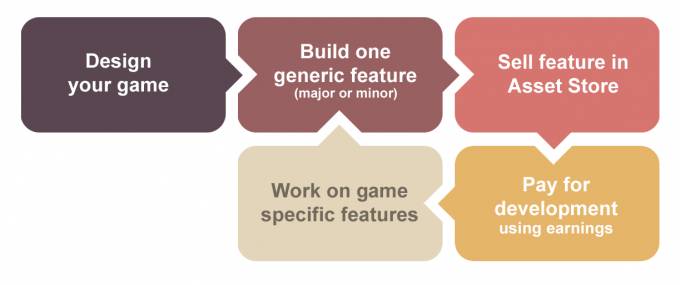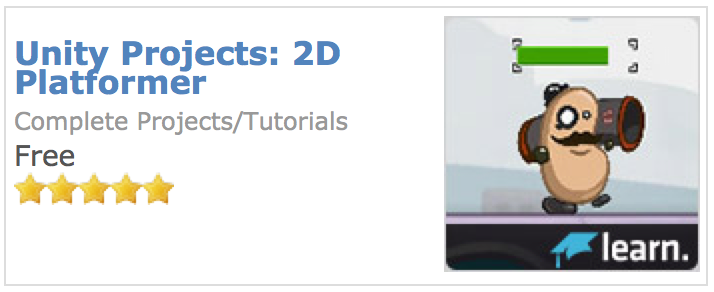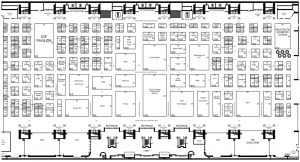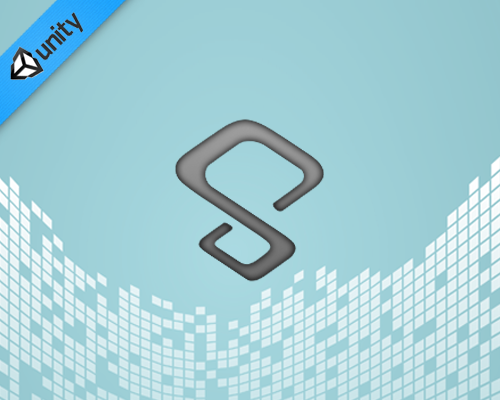As always, RivelloMultimediaConsulting.com/unity/ will be the central location for deep articles and tutorials, Facebook.com/RivelloMultimediaConsulting (like us!) will engage the growing RMC+Unity community, and for the latest opinions and cool links follow me at Twitter.com/srivello.
Unity3D is a powerful suite of tools (Project IDE, Code IDE, run-time) for game development.
A fantastic way to accelerate Unity & C# learning, empower development, and even make some money using the Unity Asset Store.
Asset Store
The Unity IDE offers an Asset Store. If you haven’t yet familiarized yourself with the Asset Store, this is the best time to dive in. You’ll find nearly everything a game developer could wish for– complete template projects, models of every shape and size, countless textures and materials, an extensive set of code libraries, hours of professional music and sound effects, and a broad selection of editor extensions to bring new functionality to Unity. Best of all, we’ve gone out of our way to make sure that these offerings are both affordable and covered by a common, easy-to-use license without legal complexities such as royalties.
I think of the store like a (sometimes free) bag of temporary art while I work. More rarely, when tackling a technical challenge I check the store to see if another developer has solved my needs and created a code library. The naming for an asset store ‘item’ doesn’t seem standardized, but when I say 3rd party code-library, package, or plugin I mean the same thing. I mean a collection of code or visual/audio art which augment the IDE itself and/or enable richer development.
Something remarkable, and quite different than the Flash community, is that these packages can actually add functionality to the Unity3D IDE itself. New first-class menus, panels, UI Gizmos, etc… It is truly amazing.
To see our work, You can checkout all of the AssetStore packages we at RMC have created for some examples and then continue reading below to learn an overview about the store.
Unity Technologies, the creators of Unity3D share the revenue from every paid purchase made. My opinion is that this revenue stream for the company helps them support the free version of Unity. More developers using Unity creates a larger pool of asset store contributors and purchasers.
Finding Asset Store Content
From within the Unity IDE (Menu -> Window -> Asset Store) or through your web browser online you can shop in the store. Search by product name or developer name, see featured items, or simply browse based on popular categories.
Categories Include;
- 3D Models
- Animation
- Audio
- Complete Projects
- Editor Extensions (My Favorite!)
- Scripting
- Textures
- & Much more…
To research this article, I scoured the community thoroughly, interviewed top developers on their favorites, and tested out many plugins to build the definitive list of the best asset store content for developers. Here is are the Essential Unity3D Plugins / Packages. All are compatible with both free and pro versions of Unity.
But who is it that is making this great content? Well, there are many prolific contributors.
Asset Store Contributors
As successful developer Daniel Sklar of ProfiDevelopers explains, the Asset Store is successfully being used all over the world. After many years in game development, his team has gained a lot of experience which they pass on in the form of well designed assets. Greener teams can save time and money by using existing content.
In my Unity Asset Store Case Studies article, several veterans discuss their success with the store.
Unity Partnerships
More recently, Unity Technologies has partnered with asset store contributors to market some key packages. These projects may be developed outside of the core company but get favorable promotion, marketing, and exposure.
Popular Unity Partnership Packages
- Everyplay! is a newer addition to the store. This innovative service is a complete solution for monetizing, acquiring and engaging users. Everyplay enables users to share their best gaming moments directly from within the game as video!
- With Kii, game developers get a fast and scalable back-end, powerful analytics and game distribution services, so they can focus on the stuff that matters — the game experience.
- GameAnalytics automatically takes care of all the basic tracking/analytics needs for your game. All you have to do is interpret the results.
- PaeDae is how you monetize your game with in-game advertising without breaking its cohesive gameplay experience.
Unity 1st Party Packages
As developers we typically see new features added to the Unity tool itself. You download the latest version of the IDE and checkout the release notes to see what new features are available. However, a second way for Unity Technologies to distribute non-essential functionality is through the asset store. These 1st Party Packages include complete game projects, assets for learning how to use Unity, as well as for testing your existing projects.
Popular 1st Party Packages
- Complete: Unity Projects: Platformer (2D)
- Complete: Unity Projects: Shooter (2.5D) — With full tutorial videos
- Complete: Unity ProjectsL Bootcamp (3D)
- Learning: Unity Sample Assets
- Testing: Unity Test Tools
Selling Asset Store Packages ($$$)
For years, insiders have know that Unity Devs can make a living from Asset Store. The Unity development community is now larger than ever. Larger audience = larger earnings.
An inspiring article on the Unity Blog explains how we can all Pay for our Indie games via Asset Store work. Although it isn’t easy, making a living through the Asset Store has been possible for at least two years. It all depends on your expenses, the appeal and pricing of your product, the competition, your skills and what you are willing to sacrifice (more on that later).
Using Asset Store To Fund Your Indie Game
- Stay alive by some means during the early days. Game design consulting was ideal for me. I could do it one day per week.
- Design your game early on to know its technical needs and requirements (later you will want to identify all kinds of synergies in order to minimize cost).
- Build some game generic features or content that will be part of your game. Make these modular and possible to “productify”.
- Sell your content in the Asset Store and use the earnings to fund your game.

This approach has many benefits:
- Starting making revenue DURING the production of your game.
- Learning opportunities: Support, business and economics, marketing strategies, teamwork, collaboration, etc…
- Network with other Asset Store developers
- Encourage modularity in your codebase
- You may FIND existing Asset Store packages that save you time.
Promoting Asset Store Packages
Maybe you’ve created a great 3D model or an editor extension for Unity, but now it’s sitting at the Asset Store shelves and gathering dust. What can you do to sell more and fund your game and your life with your awesome asset? A few really successful publishers have shared their promotion tips and we cooked them up into this advice.
Here are the 10 commandments of asset promotion
- Plan : Keep your audience notified of milestones and updates to maximise interest and retention
- Make demo videos : We love videos to learn quickly what your package does and why its great.
- Find out where your customers are : You can’t promote everywhere, so make your effort count.
- Use Forums : There is already a special place to interact with your audience.
- Tweet : Promote virally. Include a URL too.
- Sign up for 24 Hour Deals : Apply for additional promotional power via Unity Technologies.
- Tweak your Pictures : Your promotional pictures (text-copy, etc…) should be clear, concise, and attractive.
- Consider paid campaigns on Google and Facebook : These networks are cheap provide fast metrics.
- Consider time zones : You capture a wider ad market when users are awake and at their computers.
- Stay involved : Harness the power of feedback loops with your existing/potential audience.
Great! After you launch you can promote your work and easily embed your asset store package into websites like this;
My Asset Store
In my 13+ years as a pro game developer, community involvement has always been important. Involvement in groups, conferences, and open source projects helps me stay connected, teach, and learn new things. Its for these reasons, more than just profit that I’m interested in the Unity Asset Store.
Here are the in-progress diaries of a few packages.
- uMOM – Unity Manager of Managers, game framework (link)
- uEventDispatcher – Unity messaging/observer framework (link)
Others of our work are complete and live.You can checkout all of the AssetStore packages we at RMC have created and then explore the case studies below from 3rd-party developers.
I encourage everyone to get involved as a consumer and potential contributor to the asset store. It is an incredibly powerful way to take advantage of the powerful community around Unity.





 Game Developers Conference 2014
Game Developers Conference 2014



